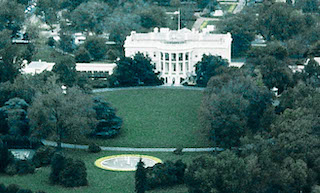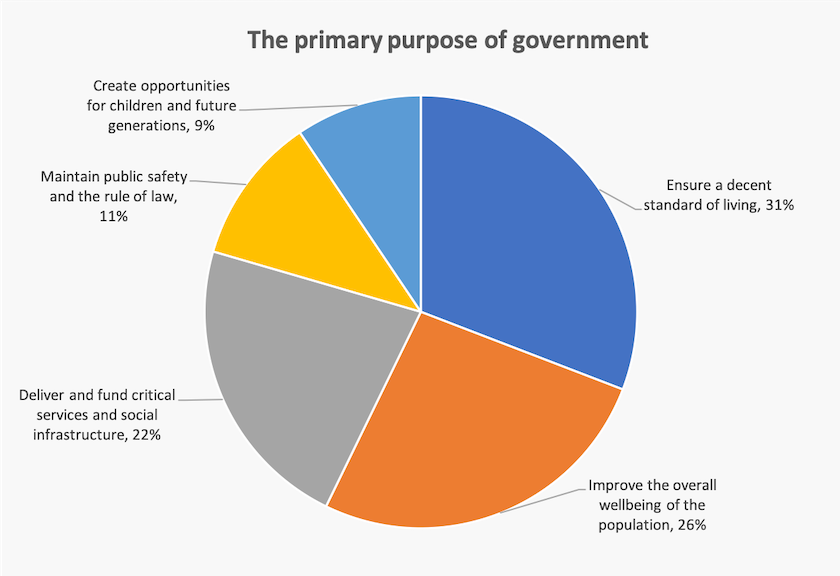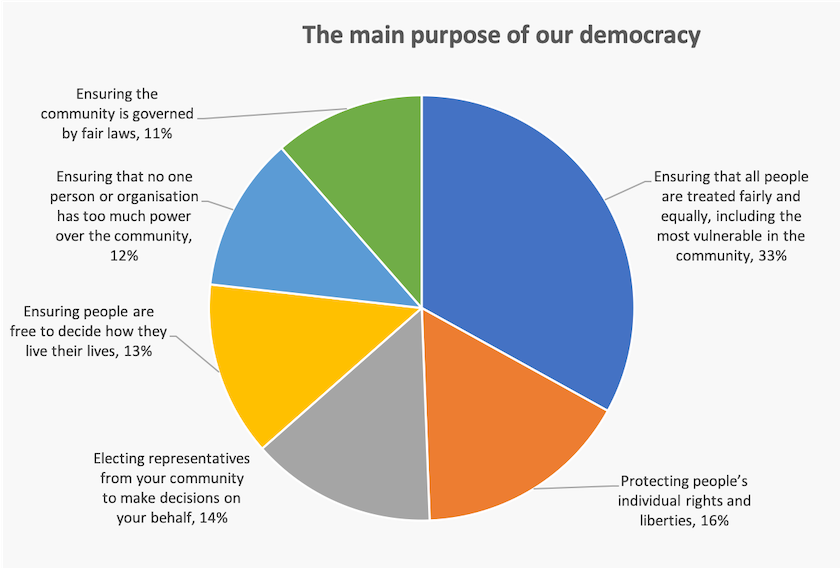Politics
Dutton’s DOGE – in imitation of Trump

As a guide to Dutton’s policies we can be pretty sure that most of what Trump and Musk are proposing will appear as a Coalition policy or at least a thought bubble a few days later. He has distanced the Coalition from Trump’s tariffs, and his general message is less MAGA than MAMA (“Make Australia Mediocre Again” is the Coalition’s variation), but otherwise he has been faithful to Trump’s agenda, particularly on climate change where he has gone full Trump.
He has also taken inspiration from Trump in his proposals to cut public service numbers, to re-shape the school curriculum. and to cut funding for our public broadcaster, the ABC.
Natassia Chrysanthos and Olivia Ireland, writing in The Age and The Sydney Morning Herald. have done a major analysis of changes in public service employment since Labor took office, and have tried to reconcile them with Dutton’s promise to cut 41 000 jobs from the public service without cutting front line services. The short answer: they don’t reconcile.
Their article Labor says Dutton’s public service cuts are from the “DOGE” handbook. Here’s where jobs could go (so far free of paywall) points out that of these 41 000 jobs created under Labor, only 7 000 have been in Canberra. The other 34 000 have been elsewhere in Australia. They present a detailed regional breakdown of this job growth. Surely those 19 new public servants in Dan Tehan’s electorate aren’t “back office” bureaucrats. Does Dutton, trying to win back Melbourne seats for the Coalition, realize that 7 000 of these new jobs have been in Melbourne and that these mid-level public servants probably live in the outer suburbs?
Besides these regional breakdowns Chrysanthos and Ireland produce many figures by agency. For example there are 1426 new workers in the Department of Veterans’ Affairs, who the Government says are clearing a backlog of overdue payments. Another 4356 public servants have been added to the National Disability Service Agency, whose job is to bring NDIS spending under control. What happens when we sack the people trying so save public money?
Inspired by Trump’s decision to abolish the US Department of Education, Dutton has flagged intervention in what he sees as “woke” education, and has used Trump’s talking points about the education department employing “thousands and thousands” of public servants in Canberra while not running a single school. (Chrysanthos and Ireland point out that the Department of Education employs 1639 people, of whom 1300 are in Canberra).
You can hear Dutton on a Sky News clip – Far-left indoctrination in Australian education becomes “norm by stealth” – threatening to make education funding to the states conditional on their curriculum content and warning state education authorities “not to be guided into some sort of an agenda that’s come out of universities”.
If university schools of education aren’t going to help guide schools’ curriculums, who does Dutton propose should write them? And what is “far-left” indoctrination? From the Sky News interview we learn that teaching about sustainability and aboriginal cultures, and having respect for aboriginal people, is “left” or “woke”.
Coalition education spokesperson Sarah Henderson echoes Dutton’s message, asserting that “We don't believe there is any room for activism or ideological agendas in education institutions”, and that “universities have got to be places of higher learning and not indoctrination”.
This form of attack has a long tradition, going back at least to Hitler’s Germany. She and Dutton develop the idea that some conspiratorial “left” has infected our learning institutions, misrepresent academic openness as “indoctrination”, and use this confected model to justify censorship. Hitler used it to expel Jews from universities.
Jessica Holloway of Australian Catholic University, writing in The Conversation, describes how school curriculums are developed: Who decides what Australian students are taught in schools?. Many are involved, particularly state education ministers, and that may provide some protection from its capture by ideological fanatics.
Education Minister Jason Clare suggests that Dutton’s agenda is less about his own authoritarian values than his desire to cut funding to public schools, which the Liberal Party has always seen as a system for those who cannot afford private schools. “Peter Dutton’s bigger agenda is to cut funding from our schools. That’s what the Liberals always do”, he says.
That’s probably the lesser of two evils. But there is no reason to expect that Dutton, if elected, would not do both – impose a Chinese-type “state” agenda (he uses the term “community values”) and cut funding.
In a similar vein, after Donald Trump called on Congress to defund US public broadcasters, Dutton has hinted strongly that if elected, the Coalition would cut funding for the ABC, an announcement he made on Murdoch’s Sky News.
Silly campaign promises expose the Coalition’s hypocrisy about the public service
Albanese and Dutton are travelling the country making election promises in marginal seats. Nothing new there. But an outside observer, struck by the nature of these promises, might believe that Australia has only one tier of government – no states and perhaps not even any local government.
Many of these promises, even quite significant ones such as Labor’s promise to allocate $200 million to upgrade Perth’s Midland Hospital, should surely be matters for state governments. We have a Commonwealth-state hospital funding agreement, and Western Australia probably has almost the world’s strongest public finances.
For every such large promise there are many smaller ones, almost all bringing the Commonwealth into territory that should be the domain of state and even local government.
Dutton provides the most outstanding example so far – outstanding for its triviality.
On a visit to a mosque in Leppington in southwest Sydney he promised that a Coalition government would spend $25 000 to boost its security, in the form of a grant for CCTV cameras.
At 0.17 cents per taxpayer that hardly qualifies as a reckless misallocation of public resources.
Or does it? Imagine the work involved in delivering these security cameras. If it were the work of local government, where it properly belongs, it would be a minor task. But imagine how the Commonwealth would handle it?
Dutton claims that he would clean out back-office jobs in the public service, but he fails to see the hypocrisy in his own behaviour. The Commonwealth public service is called on to administer ministers’ pet projects, often working under instructions that they are specifically prohibited from cooperating with state governments, lest the wrong government get credit for the project.
Quite apart from their bureaucratic cost, these Commonwealth intrusions into local matters usually incur an unforeseen political cost. Grants for commuter car parks and gun clubs did not work out well for the Morrison government. The home insulation scheme did not work out well for the Rudd government.
Our Constitution, in Section 51 which specific Commonwealth powers, is guided by the principle of subsidiarity. That is the principle that when practical, services should be delivered by government agencies closest to the people. There was a time when the Liberal Party was a strong defender of state powers, but those days are long gone, and the National Party has always seen public revenue as a resource to be looted for local projects.
In a few weeks’ time we will almost certainly have a new government in which a number of independent members of Parliament have significant power. So far, while representing their local communities, most independent members of Parliament have come together on national issues that properly belong to the Commonwealth – climate change, the energy transition, integrity, and gambling reform. Some will be pressured to secure favours for their own electorates. If they want to continue to distinguish themselves from the established parties they would be well advised to resist the temptation to seek local boondoggles like the rest.
How Australians see government and democracy
In 1930 Keith Hancock wrote that “Australian democracy has come to look upon the State as a vast public utility”.
The endurance of this view is confirmed in a major survey by the Centre for Policy Development: Purpose of government pulse: Australian attitudes towards government and democracy.
It’s a longitudinal study, from October 2021 (eight months before the Albanese government was elected ) to January 2025. At four points in time respondents were given the following options as the primary purpose of government and asked to make one choice:
- create opportunities for children and future generations;
- deliver and fund critical services and social infrastructure;
- ensure a decent standard of living;
- improve the overall wellbeing of the population;
- maintain public safety and the rule of law.

Over the course of the survey “ensure a decent standard of living” rose as people’s first choice, from around 25 percent to 31 percent, displacing other concerns. This corresponds to the period of rising interest rates and talk of a “cost-of-living” crisis. The chosen responses as at January this year are shown in the pie chart below.
Notably those with less education are most likely to assign “ensure a decent standard of living” as the main purpose of government.
Although only 9 percent of respondents assign “create opportunities for children and future generations” as their primary purpose of government, they mark down their governments for their lack of attention to long-term challenges such as climate change and providing housing. In fact there is quite an age gradient in people’s ranking of this question about opportunities for children and future generations. Of those aged over 55 only 3 percent made it their first choice, while among respondents aged under 34 many more –16 percent – made it their first choice.
Respondents were also asked to assign one of six statements as the “main purpose of our democracy”. This was over a longer period – 2017 to 2025.
- ensuring that all people are treated fairly and equally, including the most vulnerable in the community;
- protecting people’s individual rights and liberties;
- electing representatives from your community to make decisions on your behalf;
- ensuring people are free to decide how they live their lives;
- ensuring that no one person or organisation has too much power over the community;
- ensuring the community is governed by fair laws.
The results, at the end of the survey period, are shown below.

The response “ensuring that all people are treated fairly and equally, including the most vulnerable in the community” remained the first choice over that period – always above 30 percent of respondents. The researchers call it the “fair go” choice.
There was some re-shuffling among other choices: for example the libertarian choice “protecting people’s individual rights and liberties” rose from 10 percent to 15 percent over the period.
Most of the survey questions were about “government”, without specifying any particular tier of government – Commonwealth, state or local. There were, however, four questions which did ask respondents to differentiate between the tiers of government.
People saw state governments as having more effect on their lives than the Commonwealth and local governments. But when asked which level of government best reflects the interests and needs of the community, people clearly chose state and local governments over the Commonwealth. (Is this about the greater visibility of these governments?)
It is tempting to conclude from this survey that Australians have a utilitarian view of government, that so long as we get a fair go we are indifferent about the basic principles of democracy, and that Australians over 55 are greedy old people who don’t care much about future generations.
But we should not read too much into these rankings, because for both the main parts of the research people were asked to make only one choice. Anyone who thinks seriously about the role of government or the purpose of democracy would find it hard to make one ranking, and may have ideas that are not captured in choices presented by pollsters.
Political ideals
In election campaigns many media collate the policies of the main parties and lay them out side-by-side, often with a “what’s in it for me” approach, or a “what’s in it for our interest group” approach.
These Coles-Woolworths style comparisons, with their focus on promises and on the immediate future, render them fairly useless as guides even to our own wellbeing, let alone the nation’s prosperity and security. Promises are easily broken. Handouts on electricity bills and cuts to fuel excise last a year at the most.
Australian Community Futures Planning has asked me to link their Election 2025: Assessment of Major Party Policies. It uses a side-by-side layout in its summary, which includes the Greens as the third main party. But rather than drawing on statements of party policies ACFP presents its assessment of their policies as they have analysed them.
On most aspects of their assessments, laid out as points, they see no difference between the Liberal and Labor parties.
On some points about basic democratic values, however, they see a significant difference between the Liberal and Labor parties: the Liberal’s policies if implemented would see a significant increase in fear and racism, exclusion of minorities, abandonment of the separation of powers, and a general erosion of democracy. But in their view neither of those two parties is capable of taking Australia towards “a future of wellbeing and safety for all”.
Their assessment is presented in a 114-page document which goes into 35 areas of public policy, which they summarize in one sentence:
While no party is offering the full array of policies that would be necessary to make the Vision for Australia Together a reality, any government promoting policies similar to those of the Greens would be likely to make significant progress towards making the Vision a reality by 2050 or sooner.